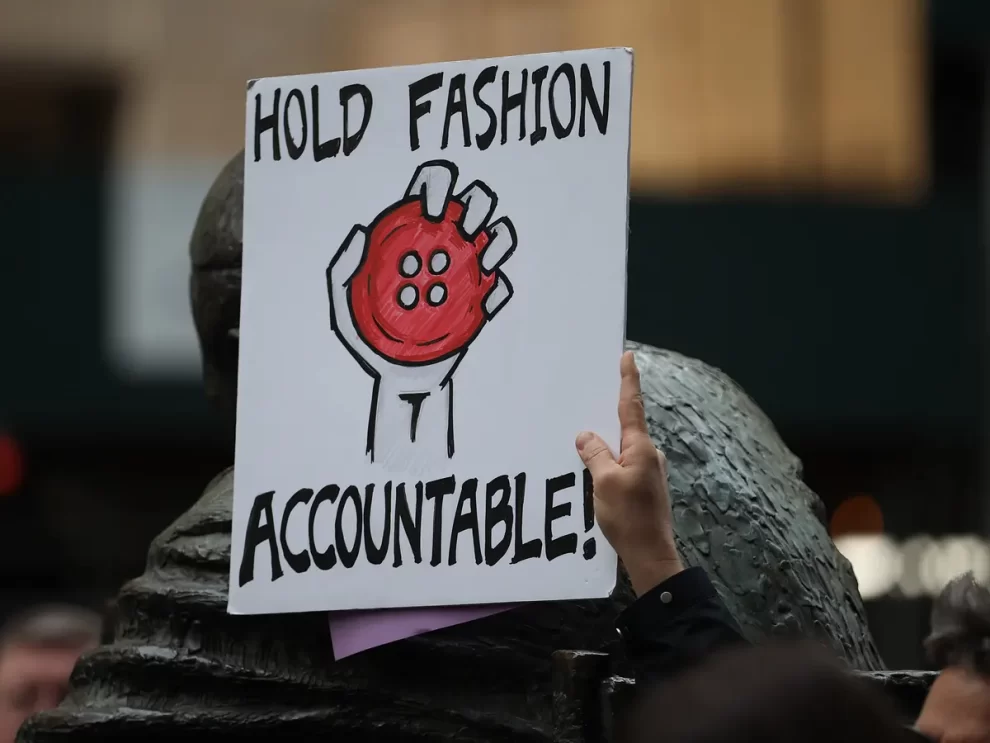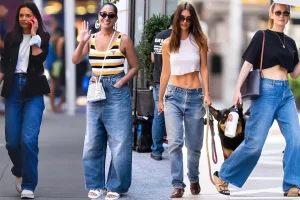In the short term, the new EU rules are forcing a crackdown on greenwashing
The EU Strategy aims to take a holistic approach and change the way clothing is produced, sold and disposed of and includes, among others, proposals to levy a tax on carbon emissions and imports, the introduction of legal minimum EcoDesign requirements, the roll-out of an EU-wide framework of Extended Producer Responsibility (EPR) effectively holding charging fashion brands and manufacturers responsible for the waste they generate. These measures would encourage repair, reuse and circular fashion through better design, sourcing and recycling practices.
EU Strategy for Sustainable and Circular Textiles: Overview of Proposed Policies
In the immediate term, the new directives and proposals are already having an impact on what is being communicated to consumers, as the policymakers signal they are working on aligning definitions of “sustainability” and which standardised criteria must be met to qualify to make such a claim without misleading consumers.
This has already led to more scrutiny and investigations by governments to crack down on greenwashing. In August 2022, the Norwegian Consumer Authority (NCA) and Netherlands Authority for Consumers and Markets (ACM) issued a joint document outlining how the Higg Materials Sustainability Index (MSI) tool developed by the Sustainable Apparel Coalition (SAC) – one of the most well-known sustainability rating systems – should improve the underlying data behind its claims, otherwise it would breach the countries’ marketing legislation and therefore become illegal. This has prompted Decathlon and H&M, among other retailers, to stop using the SAC label to avoid sanctions by the ACM. Meanwhile, France is working on a new law that would require brands to add “carbon labels” to fashion products indicating an environmental “score” from A to E.
Beyond the EU, the tide has turned too
The EU policymakers are hoping that the EU Strategy for Sustainable Textiles could reverberate through global value chains, as brands wishing to continue selling in the Single Market will have to set up their operations accordingly and are likely to adopt such practices in other regions to maximise the return on their investments.
Moreover, sustainable regulation is already shaping up in other parts of the world beyond the EU. Indeed, in the UK, the Competition and Markets Authority (CMA) has been investigating the green claims of retailers Boohoo, Asos and George at Asda, and ESG disclosures have become mandatory for a wide range of qualifying companies. In the US, California’s Garment Worker Protection Act, New York’s Fashion Sustainability and Social Accountability Act and the Federal Fabric Act all signal a significant regulatory shift.
Moreover, providing access to insights and data about one’s social and environmental impact is set to become a key part of the shopping experience because, globally, consumers increasingly want fashion companies to be purpose-driven, as illustrated by Euromonitor’s Voice of the Consumer: Lifestyles Survey 2022.
Proactively mapping out one’s supply chain is becoming a strategic imperative
As the EU and other governments are trying to tackle the lack of regulated framework when it comes to sustainability, it is becoming strategic for fashion companies to proactively map out their supply chain. Traceability is indeed a requirement to identify risks in terms of green claims or forced labour and will help prove compliance with relevant environmental or employment laws, in due time. Traceability is also the first step towards transparency that more and more consumers expect from corporations.
In the short term, this is likely to drive the adoption of blockchain technology and end-to-end supply chain mapping among fashion players. For example, in anticipation of the new EU green requirements, Spanish fashion retailer Mango recently dropped its Committed label, launched in 2017, to identify garments with “sustainable characteristics”. Instead, it will gradually replace it with a QR code that will redirect customers to information on the garments’ composition and the place where they were produced, so consumers can make their own informed decisions as opposed to the retailer making claims which could potentially be challenged as the regulation evolves. This measure is anchored in the company’s wider move towards full traceability of its value chain as it plans to publish a list of its Tier 3 factories by mid-2023, after releasing details of its Tier 1 and Tier 2 suppliers in 2021.
More such initiatives are expected in the near future, as the pressure from both consumers and regulators increases, and companies need to set a roadmap today with measurable sustainability objectives to prepare for tomorrow.
Source: Fashion United




























